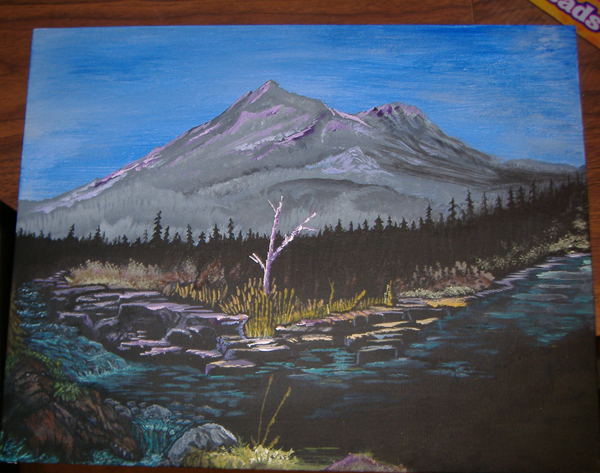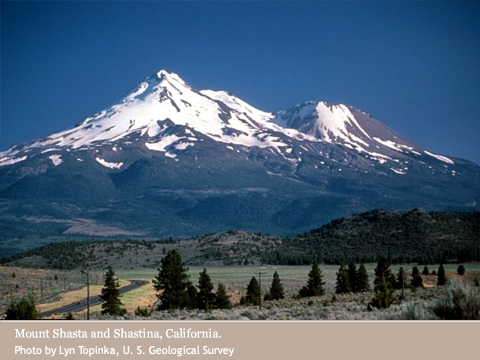It looks like you're using an Ad Blocker.
Please white-list or disable AboveTopSecret.com in your ad-blocking tool.
Thank you.
Some features of ATS will be disabled while you continue to use an ad-blocker.
share:
reply to post by M3RCSENTINAL
Well not totally sure about this, but a portion of that forest (Sequoia National Park) may lie right on the southwestern end of the Long Valley Caldera, which is, of course, an active supervolcano. And Lord knows we've talked about THAT around here. Seeing as in your dream there was no mention of a standout feature like Mt. Whitney or a similar tall mountain type volcano...That really only leaves a caldera type which would, or is, rather... flatter, with no cone. Just not sure if Redwoods exist within it. But it has scared some people in the past with massive activity, and it is one of the volcanoes I constantly monitor.
The other possibility would be Clear Lake, where there is massive geothermal energy production going on (The Geysers) from the volcanic field just south of there. Not sure if redwoods exist there either.
Strange dream alright...
Well not totally sure about this, but a portion of that forest (Sequoia National Park) may lie right on the southwestern end of the Long Valley Caldera, which is, of course, an active supervolcano. And Lord knows we've talked about THAT around here. Seeing as in your dream there was no mention of a standout feature like Mt. Whitney or a similar tall mountain type volcano...That really only leaves a caldera type which would, or is, rather... flatter, with no cone. Just not sure if Redwoods exist within it. But it has scared some people in the past with massive activity, and it is one of the volcanoes I constantly monitor.
The other possibility would be Clear Lake, where there is massive geothermal energy production going on (The Geysers) from the volcanic field just south of there. Not sure if redwoods exist there either.
Strange dream alright...
edit on Thu Apr 3rd 2014 by TrueAmerican because: (no reason given)
reply to post by Darkblade71
Mt. Shasta and Mt. Lessen are both in northern California. I don't know if these are near Redwood National park. I don't think there are volcanoes under the redwood Forrest as volcanoes are mountains and I think the Forrest is on the coast. I don't think there's a mountain there but I could be wrong.
Mt. Shasta and Mt. Lessen are both in northern California. I don't know if these are near Redwood National park. I don't think there are volcanoes under the redwood Forrest as volcanoes are mountains and I think the Forrest is on the coast. I don't think there's a mountain there but I could be wrong.
Here is a map of the active volcanoes in California: Home › Dynamic › Volcanoes Dynamic
Map › California. Clear Lake is the closest to the Redwoods that are north of the Bay area, but not really.
reply to post by adjensen
Does this:

Look like this?

*creeps self out*
If it does, then my money is on Mt Shasta.
Does this:

Look like this?

*creeps self out*
If it does, then my money is on Mt Shasta.
Well, on a good note:
Source:en.wikipedia.org...
So realistically, Mount Shasta shouldn't erupt for about 400 more years if the pattern holds.
Volcanic hazards During the last 10,000 years Mount Shasta has erupted an average of every 800 years but in the past 4,500 years the volcano has erupted an average of every 600 years. The last significant eruption on Mount Shasta may have occurred about two centuries ago.
Diller Canyon on Shastina from Weed, California Mount Shasta can release volcanic ash, pyroclastic flows or dacite and andesite lava. Its deposits can be detected under nearby small towns totaling 20,000 in population. Mount Shasta has an explosive, eruptive history. There are fumaroles on the mountain, which show that Mount Shasta is still alive.
The worst case scenario for an eruption is a large pyroclastic flow, such as what occurred in the 1980 eruption of Mount St. Helens. Since there is ice, such as Whitney Glacier and Mud Creek Glacier, lahars would also result. Ash would probably blow inland, perhaps as far as eastern Nevada.
There is a small chance that an eruption could also be bigger resulting in a collapse of the mountain, as happened when Mount Mazama in Oregon collapsed to form what is now called Crater Lake, but this is of much lower probability.[citation needed] The United States Geological Survey considers Mount Shasta a dormant volcano that will likely erupt in the future and rates it as a very high threat volcano.
Source:en.wikipedia.org...
So realistically, Mount Shasta shouldn't erupt for about 400 more years if the pattern holds.
new topics
-
Federal law trumps state and local law every time
Social Issues and Civil Unrest: 7 hours ago
top topics
-
Federal law trumps state and local law every time
Social Issues and Civil Unrest: 7 hours ago, 14 flags
